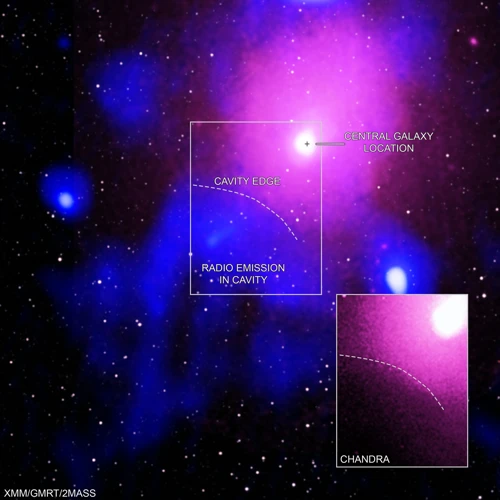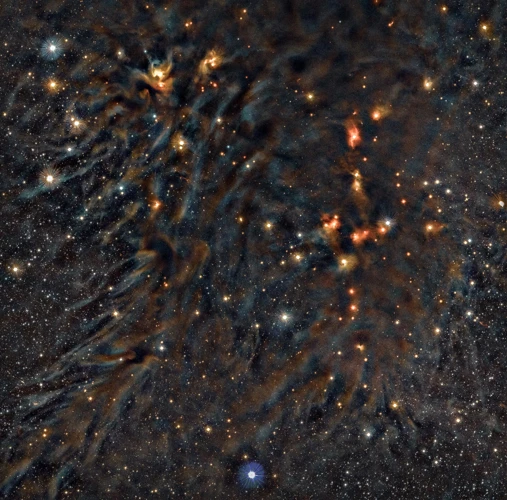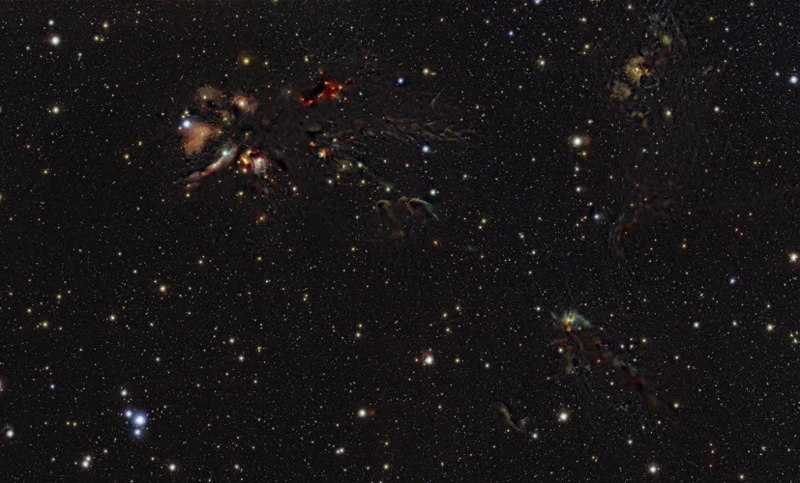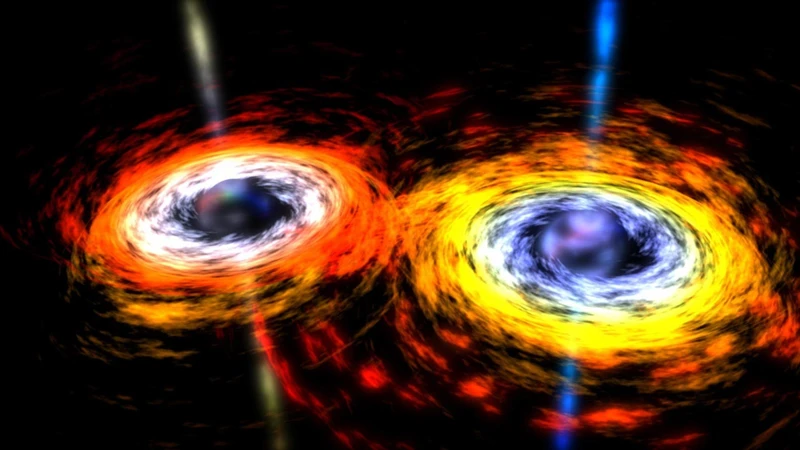Deep in the vast expanse of the universe, there exist enigmatic entities that defy our understanding: black holes. These cosmic objects, shrouded in mystery, possess such intense gravitational pull that nothing, not even light, can escape their grasp. Countless questions surround their existence, origins, and behaviors, captivating the minds of astronomers, physicists, and cosmologists alike. In this article, we will delve into the intricate world of black holes, exploring their formation theories, the discoveries that have helped shed light on their nature, the consequences they have on their surroundings, the unresolved mysteries that continue to baffle scientists, and the exciting future of black hole research.
What is a Black Hole?

A black hole is a region in space-time where gravity is so immense that it creates a gravitational pull from which nothing, not even light, can escape. These cosmic entities are formed from the remnants of massive stars that have undergone a cataclysmic collapse. The collapse occurs when a star exhausts its nuclear fuel and can no longer produce the energy needed to counteract the force of gravity. As a result, the star’s core collapses inward, creating a singularity, a point of infinite density and zero volume, at the center of the black hole. Around this singularity lies an event horizon, the boundary beyond which no information or particles can be observed or retrieved. It is this event horizon that gives black holes their distinct appearance, as they appear as “black” regions in space. Despite their seemingly ominous nature, black holes play a crucial role in the evolution of galaxies and the universe as a whole, shaping the structure of space-time through their gravitational influence.
Formation Theories

Scientists have put forth several formation theories to explain the enigmatic origins of black holes in the universe. One of the theories suggests the existence of primordial black holes, which are thought to have formed during the early stages of the universe. These black holes would have originated from the extreme densities present in the early universe and could have a wide range of masses, from tiny to supermassive. Another theory proposes the formation of stellar black holes. These black holes are created through the gravitational collapse of massive stars at the end of their life cycles. When a massive star exhausts its nuclear fuel, it undergoes a supernova explosion, shedding its outer layers and leaving behind a dense core. If the core’s mass exceeds a certain threshold, known as the Chandrasekhar limit, it will collapse under its gravity, giving rise to a stellar black hole. The third theory revolves around the formation of supermassive black holes. These black holes are believed to have grown over time through the accretion of mass from surrounding matter and the mergers of smaller black holes. It is thought that supermassive black holes reside at the centers of most galaxies, including our own Milky Way.
Primordial Black Holes
Primordial black holes are a fascinating theoretical concept that suggests the existence of black holes that formed in the early universe, shortly after the Big Bang. Unlike the more commonly known stellar black holes, which form from the gravitational collapse of massive stars, primordial black holes are thought to have originated from the extreme density fluctuations that occurred during the cosmic inflation period. During this period, quantum fluctuations in the early universe could have led to the formation of tiny black holes. If these primordial black holes still exist today, they would have a range of masses, from tiny micro-black holes to those comparable to stellar-sized black holes. The search for primordial black holes continues, as their detection could provide valuable insights into the fundamental properties of the universe, such as the nature of dark matter and the origin of cosmic structures. Dark matter is another intriguing mystery that scientists are actively exploring, and the study of primordial black holes could potentially offer clues about this elusive cosmic substance. Although their existence is currently theoretical, the possibility of discovering primordial black holes would revolutionize our understanding of the early universe and its cosmic evolution.
Stellar Black Holes
Stellar black holes are one of the three main types of black holes, and they form through the gravitational collapse of massive stars. When a massive star runs out of fuel for nuclear fusion, it can no longer counteract the force of gravity, causing its core to collapse. If the collapsing core is between about 3 and 20 times the mass of our Sun, it will become a stellar black hole. The collapse creates an incredibly dense singularity surrounded by an event horizon. Stellar black holes can range in size, with masses that can be several times greater than our Sun. Their gravitational pull is so intense that anything that crosses the event horizon will be trapped forever, adding to the mass of the black hole. Stellar black holes can have profound effects on their surrounding environments. They can attract nearby matter, forming accretion disks, which are swirling disks of gas and dust that emit powerful jets of radiation as the material gets heated and falls into the black hole. These jets can have a significant impact on galactic evolution and the formation of stars and planetary systems. The collision and merger of stellar black holes can produce gravitational waves, ripples in the fabric of space-time that were first observed in 2015, confirming a prediction made by Albert Einstein a century earlier. These waves provide scientists with valuable insights into the properties and behaviors of black holes, further enriching our understanding of the universe.
Supermassive Black Holes
Supermassive black holes are a type of black hole with incredibly large masses, ranging from millions to billions of times the mass of our Sun. These colossal cosmic entities reside at the centers of most, if not all, galaxies, including our own Milky Way. The origins of supermassive black holes remain a subject of intense scientific inquiry. One prevailing theory suggests that they form through the accretion of matter. As surrounding gas, dust, and stars are drawn into the gravitational well of a black hole, they begin to swirl around it, forming an accretion disk. The immense gravitational forces in the disk cause the material to heat up and emit intense radiation. Another possibility is the merging of smaller black holes, which would gradually build up their mass over time. The growth of supermassive black holes is intricately tied to the evolution of galaxies, as their presence influences the formation and dynamics of stars and interstellar gas. Further research and observations, such as those carried out by the Event Horizon Telescope and the study of gravitational waves, continue to shed light on the mysteries surrounding these cosmic behemoths.
Observations and Discoveries

The study of black holes has been greatly advanced through various observations and discoveries. One groundbreaking achievement was made possible by the Event Horizon Telescope (EHT), which successfully captured an image of a black hole for the first time in 2019. This remarkable feat provided visual evidence of the existence of these cosmic entities. Another significant discovery came from the detection of gravitational waves, ripples in space-time caused by the violent motions of black holes. The Laser Interferometer Gravitational-Wave Observatory (LIGO) and the Virgo Interferometer have played crucial roles in detecting these elusive waves, providing a new way to study black hole mergers and gain insights into their properties. Furthermore, X-ray and gamma-ray observations have revealed the powerful emissions and accretion processes associated with black holes, allowing scientists to study the behavior of matter falling into them. These observations and discoveries have not only expanded our knowledge of black holes but also paved the way for further research and exploration of these enigmatic cosmic phenomena.
Event Horizon Telescope
The Event Horizon Telescope (EHT) is a groundbreaking international collaboration aimed at capturing the first-ever image of a black hole’s event horizon. The project brings together a global network of radio telescopes, utilizing a technique known as Very Long Baseline Interferometry (VLBI). By synchronizing and combining data from multiple telescopes spread across the globe, the EHT creates a virtual Earth-sized telescope capable of capturing high-resolution images of black holes. One of the most notable achievements of the EHT was the image of the supermassive black hole at the center of the galaxy M87, released in 2019. This remarkable image provided strong evidence for the existence of black holes and confirmed the predictions of Albert Einstein’s general theory of relativity. The EHT continues to push the boundaries of observational astrophysics, enabling scientists to study black holes in unprecedented detail and unravel the mysteries of these cosmic wonders.
Gravitational Waves
Gravitational waves are ripples in the fabric of space-time that propagate through the universe, carrying energy as they travel. These waves are generated by the acceleration of massive objects, such as black holes, neutron stars, or even the collision of two galaxies. The existence of gravitational waves was predicted by Albert Einstein in his general theory of relativity, but it wasn’t until recently that their detection became possible. In 2015, the Laser Interferometer Gravitational-Wave Observatory (LIGO) made the groundbreaking observation of gravitational waves, providing direct evidence for their existence. This discovery opened up a new window of exploration in studying black holes and other astrophysical phenomena. Through the detection of gravitational waves, scientists are able to gain insights into the properties of black holes, such as their mass, spin, and even the events leading up to their formation. This valuable information allows researchers to refine their understanding of black holes and test the limits of our current models of gravity. Gravitational wave astronomy has become an exciting field of study, enhancing our knowledge of the enigmatic origins of black holes and their role in shaping the cosmos.
X-ray and Gamma-ray Observations
X-ray and gamma-ray observations have played a crucial role in our understanding of black holes and their behavior. These high-energy observations provide valuable insights into the processes occurring in the vicinity of black holes. As matter is pulled into a black hole, it forms an accretion disk, a swirling disk of superheated gas and dust that orbits the black hole. The intense gravitational forces and friction within the accretion disk cause the gas to heat up, emitting X-ray radiation. By studying these X-rays, astronomers can gather information about the temperature, velocity, and composition of the accretion disk, as well as the presence of any jets of particles that may be ejected from the black hole’s vicinity. Additionally, gamma-ray observations have revealed powerful bursts of energy associated with black hole activity, such as gamma-ray bursts and active galactic nuclei. These observations provide crucial data to further investigate the dynamics and properties of black holes, contributing to our ever-growing knowledge of these enigmatic cosmic phenomena.
Consequences of Black Holes

- Effects on Nearby Matter and Energy: The gravitational pull of a black hole is so strong that it significantly affects the surrounding matter and energy. As matter and radiation fall towards the black hole, they begin to accelerate and heat up, emitting powerful bursts of X-rays and gamma rays. This phenomenon, known as accretion, can generate intense jets of particles and high-energy radiation, which can have profound impacts on nearby celestial objects and cosmic structures.
- Black Hole Mergers and Galaxy Evolution: When two black holes approach each other, their immense gravitational forces cause them to spiral inward, eventually merging into a single, more massive black hole. This process is predicted by Einstein’s theory of general relativity and has been confirmed through the detection of gravitational waves. These mergers play a crucial role in the evolution of galaxies, as they release vast amounts of energy and can trigger the formation of new stars and disrupt the structure of galactic disks. The study of black hole mergers provides valuable insights into the growth and dynamics of galaxies throughout cosmic history.
Effects on Nearby Matter and Energy
The effects of black holes on nearby matter and energy are profound and far-reaching. As black holes possess an incredibly strong gravitational pull, they can disrupt the normal flow of matter and radiation in their vicinity. When a black hole accretes matter from its surroundings, it forms an accretion disk, a swirling disk of gas and dust that spirals into the black hole. As this material falls towards the event horizon, it heats up and emits intense radiation, including X-rays and gamma rays. These emissions can be detected and studied by astronomers, providing valuable insights into the properties and behavior of black holes. Additionally, the powerful gravitational forces of black holes can also cause nearby stars or interstellar gas clouds to be stretched and distorted, leading to the formation of tidal forces. This phenomenon, known as tidal disruption, can cause celestial objects to be torn apart, releasing vast amounts of energy in the process. Such events, known as stellar disruptions, produce bright flares of radiation and can be observed by telescopes as transient events in the night sky. The influence of black holes on nearby matter and energy is a fascinating area of study, shedding light on the intricate interplay between these cosmic entities and the surrounding universe.
Black Hole Mergers and Galaxy Evolution
Black hole mergers and their impact on galaxy evolution are fascinating phenomena that are still being explored by scientists. When two black holes come into close proximity, their immense gravitational forces cause them to spiral towards each other in a dance of cosmic proportions. As they draw nearer, they orbit around each other, emitting gravitational waves – ripples in space-time that propagate outward. These gravitational waves carry away energy and angular momentum, causing the black holes to gradually approach each other. Eventually, they collide and merge to form a single, more massive black hole. This merger releases an enormous amount of energy in the form of gravitational waves, creating ripples that reverberate through space. The merging of black holes not only alters the gravitational landscape but also has significant implications for galaxy evolution. The newly formed black hole can continue to grow in size by consuming nearby matter, such as gas and stars, through a process known as accretion. This accretion of material enhances the black hole’s gravitational influence, impacting the evolution of the surrounding galaxy. The energy released during the merger can trigger star formation and shape the distribution of matter within the galaxy. Scientists are actively studying these processes to better understand the intricate interplay between black holes and the evolution of galaxies.
Unresolved Mysteries

- Black Hole Information Paradox: One of the most perplexing mysteries in the realm of black holes is the Black Hole Information Paradox. According to our current understanding of physics, information cannot be destroyed. Yet, when an object falls into a black hole, it is believed that the information it contains is lost forever. This contradiction between the principles of quantum mechanics and general relativity has puzzled scientists for decades.
- Quantum Effects and Black Holes: The behavior of black holes at the quantum level remains an unresolved mystery. The principles of quantum mechanics, which govern the behavior of subatomic particles, suggest that black holes should emit radiation known as Hawking radiation. This radiation implies that black holes slowly lose mass over time and eventually evaporate completely. However, the exact mechanisms and implications of this process are still subjects of intense debate and ongoing research.
These unresolved mysteries demonstrate that despite significant advancements in our understanding of black holes, there are still profound questions that elude our comprehension. They serve as reminders of the remarkable complexity and enigmatic nature of these cosmic phenomena. Continued exploration and scientific inquiry are essential to unraveling the secrets hidden within the depths of black holes.
Black Hole Information Paradox
The Black Hole Information Paradox is a perplexing puzzle that arises from the principles of quantum mechanics and general relativity. According to quantum mechanics, information in the universe is always conserved and can never be destroyed. On the other hand, general relativity predicts that anything that falls into a black hole is lost forever, seemingly violating the conservation of information. This contradiction gives rise to the paradox: What happens to the information of an object that falls into a black hole? Several proposed solutions have been put forth, including the controversial idea of information loss, where the information is irretrievably destroyed, and the theory of information preservation, which suggests that the information is somehow encoded on the black hole’s event horizon. Resolving this paradox is crucial for understanding the fundamental laws of the universe and reconciling the principles of quantum mechanics and general relativity. Scientists continue to grapple with this enigma, and its resolution may have profound implications for our understanding of the nature of reality.
Quantum Effects and Black Holes
Quantum effects and black holes are interconnected in a perplexing manner, raising profound questions about the fundamental laws of physics. According to classical physics, black holes are described solely by their mass, charge, and angular momentum. However, when quantum mechanics is introduced into the equation, unexpected phenomena emerge. One of the most intriguing concepts is Hawking radiation, proposed by physicist Stephen Hawking. Hawking radiation suggests that black holes can emit particles and energy due to quantum effects near the event horizon, causing them to slowly lose mass over time. This surprising phenomenon challenges the notion that black holes only consume matter and highlights the interplay between gravity and quantum mechanics. These quantum effects also lead to another puzzle known as the black hole information paradox. The paradox arises from the fact that according to quantum mechanics, information is never truly lost, but black holes seemingly destroy it. Resolving this paradox could unveil new insights into the nature of gravity and the fundamental laws governing our universe.
The Future of Black Hole Research
Excitingly, the future of black hole research holds promising avenues for further exploration and discovery. Scientists are working tirelessly to develop advanced technologies and instruments that will enable us to delve deeper into the mysteries of black holes. For instance, the development of more powerful telescopes and space-based observatories, such as the forthcoming James Webb Space Telescope, will provide unprecedented capabilities for studying black holes and their surrounding environments. This will allow us to obtain more detailed images and collect invaluable data, helping us understand the intricate structure and dynamics of these enigmatic entities. Interdisciplinary collaborations between astronomers, physicists, mathematicians, and computer scientists are thriving. Combining their expertise, these collaborations open up new possibilities for tackling complex problems associated with black holes, such as the information paradox and the quantum behavior of these cosmic beasts. Undoubtedly, the future of black hole research holds great promise, and with each new discovery, we come closer to unraveling the secrets lying within these captivating cosmic phenomena.
Advanced Technologies and Instruments
The study of black holes has been greatly aided by advancements in technology and the development of cutting-edge instruments. These advanced technologies have allowed scientists to observe and study black holes with unprecedented detail and precision. One such technological breakthrough is the Event Horizon Telescope (EHT), a network of radio telescopes located around the world that work together to create an Earth-sized virtual telescope. The EHT has enabled scientists to capture the first-ever image of a black hole’s event horizon, providing valuable insights into the structure and nature of these cosmic entities.
In addition to the EHT, the discovery of gravitational waves has revolutionized our understanding of black holes. Instruments like the Laser Interferometer Gravitational-Wave Observatory (LIGO) and the Virgo detector have detected gravitational waves produced by the merging of black holes. These waves carry unique signatures that reveal important information about the masses, spins, and distance of the black holes involved in the merger events. Gravitational wave detectors have opened up a new window of observation, allowing scientists to directly detect and study black holes in ways previously thought impossible.
X-ray and gamma-ray observations have also played a crucial role in uncovering the mysteries of black holes. Instruments such as the Chandra X-ray Observatory and the Fermi Gamma-ray Space Telescope have provided valuable data on the high-energy processes occurring near black holes. These observations have helped scientists understand the accretion disks, jets, and powerful outbursts of energy associated with black holes, shedding light on the complex interplay between matter and gravity in their vicinity.
Advancements in computational simulations and modeling have allowed scientists to create detailed simulations of black hole formation and evolution. These simulations, combined with observations from telescopes and gravitational wave detectors, help refine our understanding of black holes and test various theoretical models.
These advanced technologies and instruments have propelled black hole research forward, allowing scientists to peer into the depths of the universe and unravel the enigmatic nature of these cosmic wonders.
Interdisciplinary Collaborations
Interdisciplinary collaborations are emerging as a powerful approach in advancing our understanding of black holes. The study of these enigmatic cosmic entities requires expertise from various fields, including astrophysics, mathematics, computer science, and engineering. By bringing together scientists from different disciplines, novel perspectives, methodologies, and techniques can be applied to unravel the mysteries of black holes. For example, astrophysicists collaborate with computer scientists to develop sophisticated simulations that model the behavior and interactions of black holes. These simulations help refine our understanding of how black holes form, evolve, and interact with their surroundings. Additionally, mathematicians contribute by developing new mathematical frameworks and equations that describe the properties and dynamics of black holes, allowing scientists to make precise predictions and interpretations of observational data. Engineers play a crucial role in designing and building advanced telescopes, detectors, and spacecraft that enable us to observe black holes with unprecedented precision and sensitivity. By fostering collaboration between these disciplines, our knowledge of black holes can be expanded and new breakthroughs can be made, bringing us closer to unraveling the enigmatic secrets of the universe’s most captivating phenomena.
Conclusion
Black holes, with their enigmatic origins and mysterious properties, continue to captivate the scientific community and intrigue our imagination. Through extensive research and technological advancements, we have made significant progress in understanding these cosmic phenomena. We have explored their formation theories, made groundbreaking observations with instruments like the Event Horizon Telescope and detected gravitational waves. Despite these achievements, many mysteries remain unsolved, such as the black hole information paradox and the interplay between quantum effects and black holes. The future of black hole research appears promising, with advanced technologies and interdisciplinary collaborations paving the way for further discoveries. As we continue to unravel the secrets of black holes, we gain deeper insights into the fundamental workings of our universe. The journey to understand these cosmic enigmas is far from over, and with each new revelation, we move closer to unraveling the complex fabric of the cosmos.
Frequently Asked Questions
1. How are black holes formed?
Black holes are formed from the remnants of massive stars that undergo a gravitational collapse. When a star exhausts its nuclear fuel, the force of gravity causes its core to collapse inward, forming a singularity surrounded by an event horizon.
2. Can you see a black hole?
While you cannot directly see a black hole, their presence can be inferred through the observation of their effects on surrounding matter and the detection of various forms of radiation emitted by the material falling into them.
3. How big can black holes get?
Black holes come in a range of sizes. Stellar black holes typically have a mass several times that of our Sun, while supermassive black holes found at the centers of galaxies can have masses millions or even billions of times greater than our Sun.
4. Can anything escape from a black hole?
Once something crosses the event horizon of a black hole, theoretically nothing can escape its gravitational pull, including light. This is why black holes appear “black” since no information or particles can be observed or retrieved from within the event horizon.
5. What happens if you fall into a black hole?
If you were to fall into a black hole, you would experience a phenomenon known as “spaghettification.” The intense gravitational forces would stretch your body into long, thin strands as you got closer to the singularity.
6. Do black holes move?
Black holes can move within their host galaxies or be affected by the gravitational interactions with other celestial objects. However, their movement is relatively slow compared to other astronomical phenomena.
7. Are there any black holes near our solar system?
As of current knowledge, there are no known black holes in close proximity to our solar system. The nearest known black hole, named V616 Monocerotis, is located approximately 3,000 light-years away.
8. Can black holes die?
Theoretically, black holes do not die. Over time, they may lose mass through a process called Hawking radiation, but their gravitational influence will persist as long as the singularity at their core and the event horizon exist.
9. Are there any dangers posed by black holes?
For objects that are far away from a black hole, the gravitational effects are negligible. However, if a black hole were to come close enough to our solar system, it could potentially disrupt the orbits of planets and other objects, causing significant disturbances.
10. Can black holes be used for time travel?
The concept of using black holes for time travel is purely speculative at this point. While some theoretical models suggest the possibility of traversable wormholes associated with black holes, no experimental evidence supports the existence or practicality of time travel through black holes.








